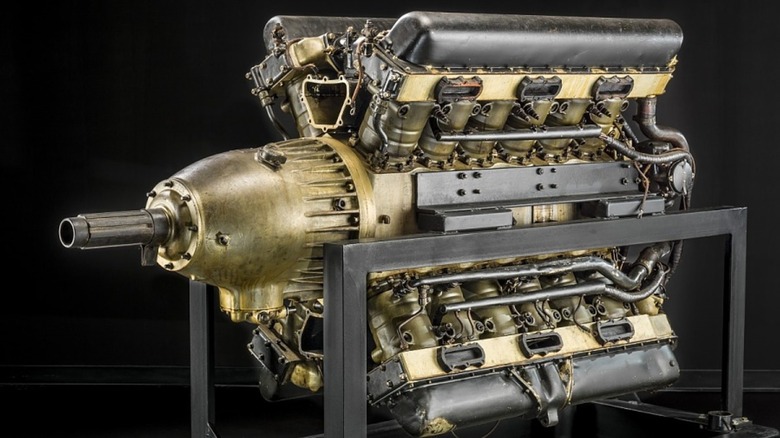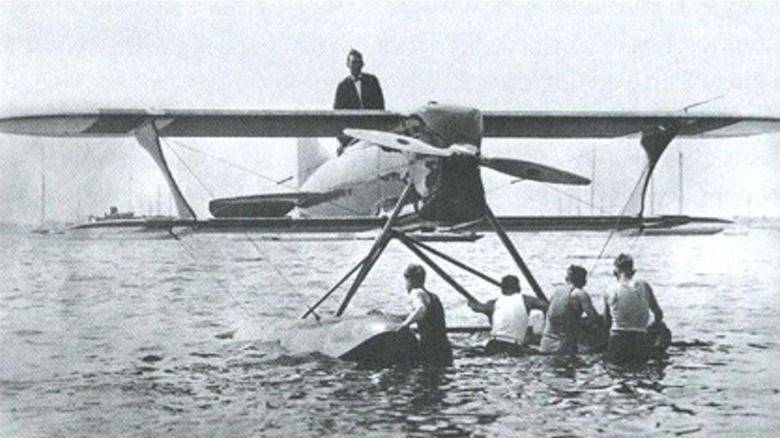All About Packard's Record-Breaking 24-Cylinder Engine
Packard was a luxury American automaker, and the brand's bread-and-butter was producing exclusive motorcars for the wealthy, including the first-ever V12-powered production car in 1915. However, Packard made an interesting swerve in the 1920s, when Lt. Alford Joseph Williams approached the company in 1926. Williams wanted Packard to develop an engine capable of winning the Schneider Trophy air race. He decided to enlist the help of Packard after the U.S. stopped supporting his team. The now-defunct automaker Packard accepted the challenge and turned its attention to aviation, in an attempt to claim victory at the prestigious air race.
Packard took two of its existing Model 1500 V12 engines and mounted one atop the other, with a single crankshaft combining them. The result was dubbed the Packard 1A-2775 X-24 engine, although many refer to it as the Navy did, purely as the Packard X-2775. The engine was mightily ambitious, and although it never took home a trophy, the X-2775 set an unofficial speed record in 1927, reaching 322 mph across a 1.9-mile stretch.
Ultimately, only two X-2275 engines were ever built, with one being modified over time and currently lost to the world, while the U.S. Navy donated the other one to the Smithsonian Museum. With the engines being built to order and carrying a $35,000 asking price back in the late '20s, it's no wonder that more don't exist, although it's great that at least one surviving example is in careful hands now to remind future generations of what the pinnacle of 1920s aviation engineering looked like.
Specifications and capabilities of Packard's 24-cylinder engine
The X-2775 was designed by Lionel Melville Woolson, who configured the engine in an unusual X shape with four banks of six cylinders. The X-2775 used a single-piece, cast-aluminum crankcase, and many parts from the Packard 1500 V12 engines were reused, although the crankshaft, connecting rods, and valve gear were unique to the X-24. Total displacement was a mind-blowing 45.5 liters, and peak power was delivered at 2,780 rpm, in the form of 1,250 galloping horses. The second X-2775 was modified to sport a roots-style supercharger, which saw output soar even higher, to 1,300 hp at 2,700 rpm, although this engine was never fitted to the Schneider aircraft. It is rumored that Packard even created a more powerful 2A-2775 engine, with 1,900 horsepower, although no pictures or test data have ever been uncovered.
As far as the record goes, the 322-mph top speed run has been disputed, with even the pilot himself claiming that the speed was achieved with the wind, and that he believed the real speed was in fact 287 mph. Nevertheless, this incredible engine was impressive, and the stats associated with it are fascinating, even as we approach 100 years since the initial design.

